Currently working with PHP and iMagick to develop a poster printing Web application.
This is the example image I am using to test upload/image editing features of the application:

The image contains the following EXIF data:
[FileName] => 1290599108_IMG_6783.JPG
[FileDateTime] => 1290599109
[FileSize] => 4275563
[FileType] => 2
[MimeType] => image/jpeg
[SectionsFound] => ANY_TAG, IFD0, THUMBNAIL, EXIF, INTEROP, MAKERNOTE
[COMPUTED] => Array
(
[html] => width="3504" height="2336"
[Height] => 2336
[Width] => 3504
[IsColor] => 1
[ByteOrderMotorola] => 0
[CCDWidth] => 22mm
[ApertureFNumber] => f/5.6
[UserComment] =>
[UserCommentEncoding] => UNDEFINED
[Thumbnail.FileType] => 2
[Thumbnail.MimeType] => image/jpeg
)
[Make] => Canon
[Model] => Canon EOS 30D
[Orientation] => 6
[XResolution] => 72/1
[YResolution] => 72/1
[ResolutionUnit] => 2
[DateTime] => 2009:08:31 08:23:49
[YCbCrPositioning] => 2
[Exif_IFD_Pointer] => 196
However - iMagick, when __construct'ed with this image, automatically rotates it an additional 90 degrees CCW as per [Orientation] => 6 (I think!). Resulting in this...

What I'd like to know is...
How can I maintain the original orientation of the image seen at the top of the page? And is this possible through disabling the auto-rotation performed by iMagick?
Many thanks
UPDATE: Here's the solution I've come up with... It will fix the orientation based on the orientation in the EXIF data
public function fixOrientation() {
$exif = exif_read_data($this->imgSrc);
$orientation = $exif['Orientation'];
switch($orientation) {
case 6: // rotate 90 degrees CW
$this->image->rotateimage("#FFF", 90);
break;
case 8: // rotate 90 degrees CCW
$this->image->rotateimage("#FFF", -90);
break;
}
}